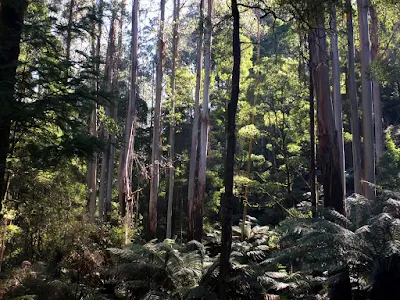Our beautiful town is blessed with some wonderful bird
habitat. Tall trees, remnant understorey, wetlands and even a small patch or
two of grassland means that a wide range of bird species enjoy living with us,
(but for how much longer?).
Three interesting sightings recently have confirmed that
Drouin's bird population is relatively healthy.
European Goldfinch
The natural range for this bird is throughout European and
North African countries. It was introduced to Australia in the 1860's.
 |
| European Goldfinch |
The Goldfinch inhabits wasteland areas like neglected
industrial sites, roadside and railway corridors and some open paddocks. It
particularly likes the seeds of thistles and other introduced weeds and
sometimes eats fruit and insects.
 |
| Cooling off at McNeilly Wetlands one recent hot day |
Improved farming practices such as weed eradication resulted
in a decline in numbers in many areas but anecdotally they seem to making a
comeback, perhaps suggesting they are adapting to native habitat.
Buff-banded Rail
This cryptic bird is probably more common than we realize.
The Rail is a ground-dwelling bird that inhabits the reed beds of a wide range
of terrestrial and coastal wetlands.
 |
| Right beside the Two Towns Trail in Civic Park |
Buff-banded Rails feed on a variety of molluscs, insects and
larvae taken from wet ground.
 |
| A worm for breakfast |
The bird looks a little like a small domestic hen,
particularly when it runs for cover rather than flying when disturbed.
Nankeen Night Heron
Recently one evening we briefly glimpsed a Nankeen Night
Heron working the shallows of the pond at Bellbird Park.
This bird, despite its size, is often overlooked. The Night
Heron is an active nocturnal feeder around our wetlands, lakes, billabongs,
large dams, estuaries and tidal channels. It takes a range of fish, frogs and
other aquatic species.
 |
| Nankeen Night Heron with breeding plumes (Port Albert) |
Throughout the day Nankeen Night Herons roost quietly in
some nearby tall trees, often in big numbers.
 |
| Communal daytime roost (Heyfield) |
'Nankeen' is a yellow-buff coloured cloth that originally
was imported from Nanking in China, giving rise to the naming of the bird with
supposedly similar colouring.
How lucky are we human residents of Drouin to share this
little corner of our world with such fascinating and beautiful animals?








